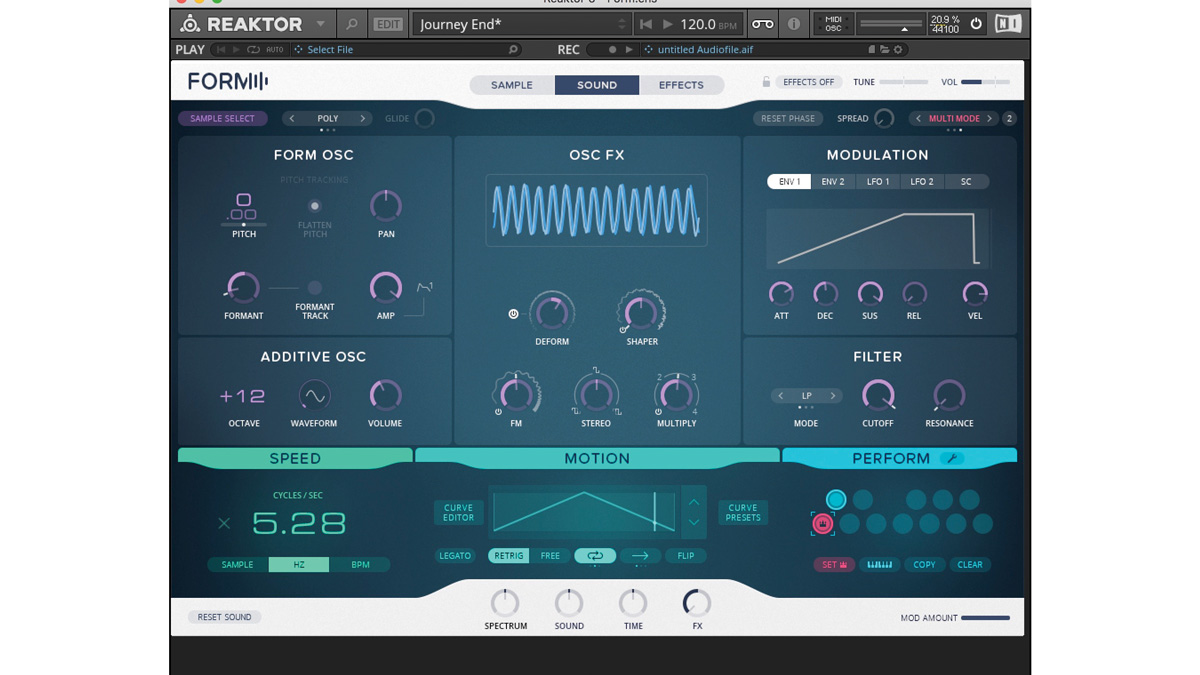Meet the programmers: Native Instruments
The developer behind NI's Form describes its functions

Native Instruments' Reaktor-powered Form is one of the tastiest synths of 2016. In this Q&A interview, Reaktor Product Designer Jonathan Heppner tells us how it all came together and what it's going on under the hood that makes it so special…
What's your history in music and in programming? What do you do over there at Native Instruments?
"I'm the Product Designer for NI's Reaktor Instrument development team. I used to play a few instruments (piano, saxophone…), but most of the time, I play around with synths and sequencers as a hobby. I also learned programming as a hobby, while I was working at my previous job, as a mechanical engineer."
What was the toughest part of Form to create from a development point of view?
"Some of the features in Form required us to stretch the limits of what is possible in Reaktor. One feature in particular, Multi Mode, was very difficult to realise. This mode is a type of multitimbrality, where you can play multiple patches at one time. We had to invent a voicing architecture, which would make this feature possible."
"Form's USP is the fact that it 'resynthesises' your chosen sample - and it works incredibly well! How exactly does Form track the sample's pitch and resynthesise it, from a technical perspective? What technology is used to ensure accurate repitching?
"It uses a unique pitch tracking technique, which looks for patterns in a waveform. When a pattern is identified, it can be used to determine the pitch. After we've determined an estimated pitch curve for the sample, we use a predictive algorithm to smooth it out, and give a more accurate result.
Want all the hottest music and gear news, reviews, deals, features and more, direct to your inbox? Sign up here.
"To resynthesise the sample, Form uses a technique called PSOLA (Pitch Synchronous OverLap-Add). Although this is a well-known technique, Form takes it to a different level by adding more effects, which can help with formant tracking, flattening the pitch, or twisting your sample into something new."
In your opinion, does Form work best with particular types of sonic material?
"It's designed to work with monophonic sounds. For example, a dry vocal track, a woodwind instrument, or a one-shot from a vibraphone. These sounds will all work well with Form's pitchtracking engine. But if you don't feel like following the rules, you can try working with different types of material. Personally, I've been experimenting with drums, and even with some ambient music. I find that any sample that contains a strong fundamental frequency (eg, a good bassline) will work with Form. The pitchtracking system can identify this bassline, and use it as a way to interpret the sample."


Computer Music magazine is the world’s best selling publication dedicated solely to making great music with your Mac or PC computer. Each issue it brings its lucky readers the best in cutting-edge tutorials, need-to-know, expert software reviews and even all the tools you actually need to make great music today, courtesy of our legendary CM Plugin Suite.
